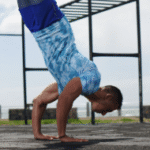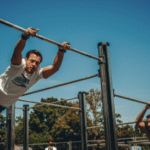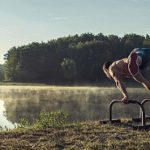Injury Prevention Strategies in Advanced Private Calisthenics
While I’m currently located in Brazil, I can certainly provide a detailed description of injury prevention strategies in advanced private calisthenics, as these principles are universally applicable, including in Houston, USA.
Injury Prevention Strategies in Advanced Private Calisthenics (Hypothetical Houston, USA)
For advanced calisthenics athletes in Houston pushing the boundaries of human movement with challenging skills like the planche, Victorian, one-arm handstand, and dynamic transitions, injury prevention transcends basic warm-ups. It becomes an integral and meticulously planned aspect of their training regimen, especially when guided by a dedicated private coach. The high forces, extreme ranges of motion, and complex coordination involved in advanced calisthenics demand a proactive and sophisticated approach to staying healthy and ensuring long-term progress.
Here’s a detailed exploration of the comprehensive injury prevention strategies a qualified advanced private calisthenics coach in Houston would implement:
- Meticulous and Progressive Warm-up Protocols:
Dynamic Mobility: Moving beyond static stretching, warm-ups focus on dynamic movements that take joints and muscles through their full range of motion, mimicking the demands of the upcoming exercises. This might include arm circles, leg swings, torso twists, and specific joint articulations for wrists, shoulders, and hips.
Skill-Specific Preparation: Incorporating lighter versions or preparatory drills for the advanced skills planned in the session. For example, before attempting planche leans, the warm-up might include scapular protraction/retraction exercises and wrist conditioning.
Gradual Load Introduction: Progressively increasing the intensity and load on the targeted tissues. This might involve easier variations of exercises or lower volume sets before moving to more demanding work.
- Individualized Assessment and Addressing Weak Links:
Regular Movement Screening: Continuously monitoring the athlete’s movement patterns to identify any developing imbalances, compensations, or restrictions that could predispose them to injury.
Targeted Accessory Work: Implementing specific exercises to strengthen smaller, often overlooked muscles that play crucial roles in joint stability and injury prevention. This might include rotator cuff exercises, wrist and forearm strengthening, and posterior chain work.
Addressing Mobility Deficits: Identifying and actively working on any limitations in range of motion through tailored mobility routines. This ensures joints can handle the extreme angles required in advanced skills without undue stress.
- Perfecting Form and Technique:
Continuous Refinement: Even at an advanced level, ongoing attention to form is paramount. The coach provides meticulous feedback and corrections to ensure efficient and safe movement patterns, minimizing stress on joints and connective tissues.
Biomechanical Optimization: Understanding the athlete’s unique body structure and tailoring technique cues to maximize leverage and minimize strain.
- Strategic Programming and Load Management:
Progressive Overload with Caution: Gradually increasing the difficulty and volume of training, but with a heightened awareness of the potential for overtraining at advanced levels. The coach will monitor the athlete’s response and adjust the program accordingly.
Periodization and Deloading: Implementing structured training cycles with periods of lower intensity and volume (deloads) to allow for adequate recovery and prevent cumulative fatigue that can lead to injury.
Variety and Variation: Incorporating a diverse range of exercises and variations to avoid repetitive stress on specific joints and tissues.
- Emphasizing Core Stability and Control:
Integrated Core Training: Focusing on exercises that engage the core in a functional and integrated way, mimicking the demands of advanced calisthenics movements where core stability is crucial for control and preventing injury, especially in dynamic skills and static holds.
Anti-Movement Training: Incorporating exercises that resist unwanted movement (e.g., anti-rotation, anti-extension) to enhance stability and protect the spine.
- Active Recovery and Regeneration:
Mobility and Flexibility Work: Encouraging and prescribing regular mobility and flexibility routines outside of formal training sessions to maintain joint health and muscle length.
Low-Intensity Activity: Incorporating active recovery methods like light cardio or dynamic stretching to promote blood flow and reduce muscle soreness.
Sleep Optimization: Educating the athlete on the critical role of adequate and quality sleep for tissue repair and recovery.
Nutrition Guidance: Providing general guidance on nutrition to support recovery and tissue health.
- Listening to the Body and Communication:
Educating on Pain vs. Discomfort: Teaching the athlete to differentiate between normal training discomfort and pain that could indicate an impending injury.
Open Communication: Fostering an environment where the athlete feels comfortable communicating any pain, fatigue, or concerns to the coach. The program should be adaptable based on the athlete’s feedback.
- Gradual Skill Progression and Avoiding Ego Lifting:
Respecting the Process: Emphasizing the importance of mastering each progression before moving to more advanced skills, even if the athlete feels mentally ready.
Avoiding Overt Attempts: Discouraging attempts at skills beyond the athlete’s current controlled capacity, as this significantly increases the risk of injury.
In conclusion for Houston’s advanced calisthenics athletes, injury prevention is not an afterthought but a cornerstone of their training. A dedicated private coach plays a vital role in implementing these comprehensive strategies, ensuring the athlete can continue to push their limits safely, sustainably, and achieve long-term mastery in the demanding world of advanced bodyweight training in the heart of Texas.

Injury Prevention Strategies in Advanced Private Calisthenics
Route
Calisthenics Gym Houston Functional Bodyweight Training
Secondary phone: (346) 483-3195
Email: info@calisthenicsclubhouston.com
URL: https://calisthenicsclubhouston.com/
Monday 6:00 AM - 7:00 PM Tuesday 6:00 AM - 7:00 PM Wednesday 6:00 AM - 7:00 PM Thursday 6:00 AM - 7:00 PM Friday 12:00 PM - 6:30 PM Saturday 9:45 AM - 12:00 PM Sunday 3:00 PM - 5:00 PM





